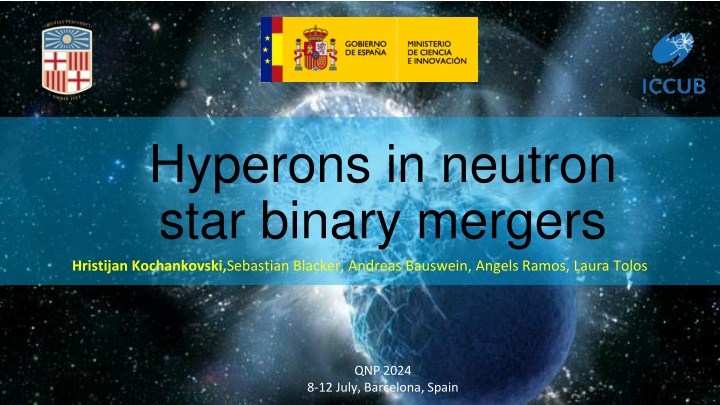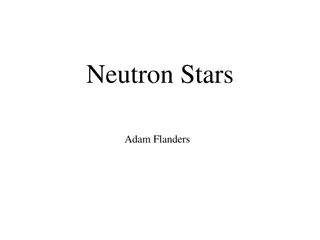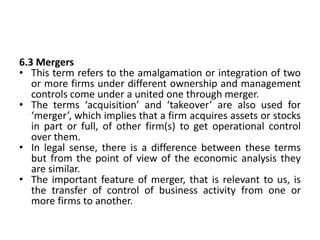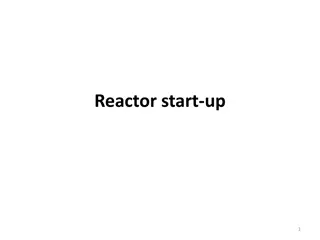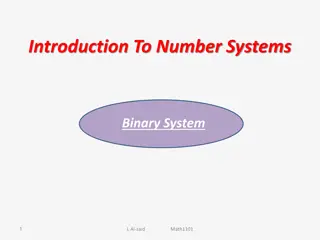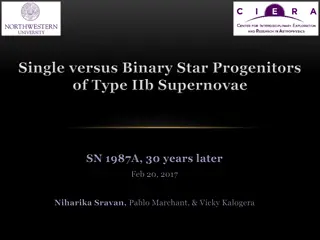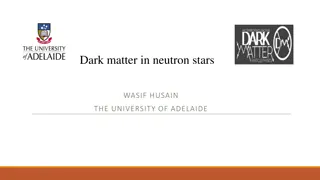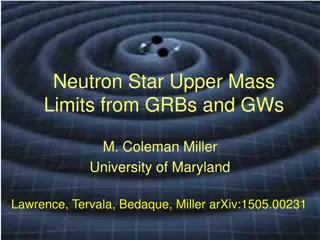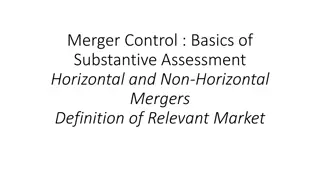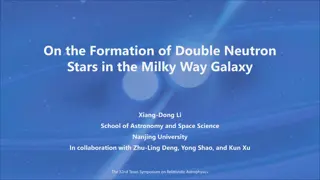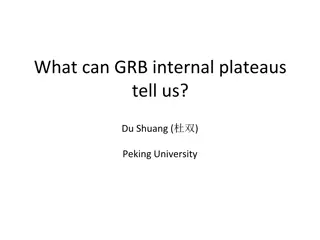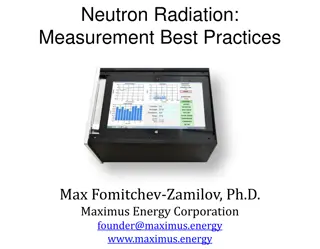Hyperons in Neutron Star Binary Mergers - Research Insights
Research on hyperons in neutron star binary mergers explores the influence of high temperatures, equilibrated matter characteristics, and post-merger frequencies. The study investigates the impact of hyperonic equations of state and the challenges in inferring matter composition. The findings suggest a systematic frequency shift and differentiate between nucleonic and hyperonic models.
Download Presentation

Please find below an Image/Link to download the presentation.
The content on the website is provided AS IS for your information and personal use only. It may not be sold, licensed, or shared on other websites without obtaining consent from the author.If you encounter any issues during the download, it is possible that the publisher has removed the file from their server.
You are allowed to download the files provided on this website for personal or commercial use, subject to the condition that they are used lawfully. All files are the property of their respective owners.
The content on the website is provided AS IS for your information and personal use only. It may not be sold, licensed, or shared on other websites without obtaining consent from the author.
E N D
Presentation Transcript
Hyperons in neutron star binary mergers Hristijan Kochankovski,Sebastian Blacker, Andreas Bauswein, Angels Ramos, Laura Tolos QNP 2024 8-12 July, Barcelona, Spain
Motivation High temperature further enhances production of hyperons 100 NS mergers Temperature (MeV) Supernovae HYPERONS??? 10 Nuclei 1 Neutron Star 0 1 Proton-neutron asymmetry 2 K.C. Gendreau et al. (2012), SPIE, 8443, 13
Characteristics of hyperonic equations of state I ? equilibrated matter at ? = ? Equation of state (EoS) 3
Characteristics of hyperonic equations of state II IT IS DIFFICULT TO INFER THE COMPOSITION OF THE MATTER BASED ONLY ON COLD STAR OBSERVABLES 4
Characteristics of hyperonic equations of state III Thermal pressure - ?? Thermal index - ? ? = 1 +?? ?? ??,??,? = ? ??,??,? ? ??,??,0 ?? th= 1.75 Colored lines hyperonic models black lines nucleonic models 5 *For each model it is assumed that weak equilibrium between the hadrons is fulfilled!
Influence of hyperons on the dominant post merger frequency I Janka et al, Handbook of Nuclear Physics, 2022 Big set of three dimensional (3D) EoSs We simulate merging of two neutron stars with ?.?? mass each NUCLEONIC EOSs HYPERONIC EOSs Discriminating the impact of the different thermal treatment associated to the different composition! 3D EoS 1.75 Cold (1D) EoS + ? ? = ?????3? ?????(1? + ( ? = 1.75)) 6
FOR THE FOLLOWING ANALYSIS, WE ASSUME THAT THE COLD EOS IS KNOWN WITH A SUFFICIENT PRECISION BUT THE COMPOSITION IS STILL UNKNOWN Astrophysics in the XXI Century with Compact Stars Ed. by: C. A. Z. Vasconcellos, F. Weber, World Scientific Singapore (2023) A. Sedrakian et al. 7
Influence of hyperons on the dominant post merger frequency II MAIN CONCLUSIONS 1. Systematic shift toward higher frequencies of EoSs. the hyperonic 2. Nucleonic models are scattered around the reference value. 3. matter only in very small quantities, the corresponding EoSs behave like nucleonic ones If the hyperons are present in Blacker, Kochankovski et al., PRD, 2024 8
Influence of hyperons on the dominant post merger frequency III Blacker, Kochankovski et al., PRD, 2024 1. Hyperonic EoSs: High shifts ?, low average thermal index th. 2. scattered around ? 0, high average thermal index th. Nucleonic EoSs: Shifts 9
Influence of hyperons on the dominant post merger frequency IV Blacker, Kochankovski et al., PRD, 2024 Fit of the nucleonic models Maximum deviation of the nucleonic models Hyperonic EoSs lie outside of the band indication for the presence of hyperons 10
Influence of hyperons on the dominant post merger frequency V More massive binaries ????= 2.8 ? + ?;? = 1 Asymmetric binaries ????= 2.8 ? ;? = 0.8 Kochankovsi et al. - in progress 11
Summary The appearance of hyperons has a strong impact on both the cold and the finite-temperature part of the EoS. All hyperonic EoSs show a drop in the thermal pressure, and subsequently, in the thermal index at densities where hyperons start to have a significant contribution in matter. The characteristic signature on the dominant post-merger gravitational wave frequency a systematic shift toward positive values that can reach up to ~??? Hz. different thermal behavior of the hyperonic EoSs leaves a The influence of the hyperons on other quantities in the remnant, such as temperature and maximum density, should also be investigated. 12
Thank you for your attention Gr cies!
RMF model extended I Baryon s and lepton s equations of motions Scalar and baryonic density Fermi dirac distribution Effective chemical potential and charge neutrality Meson s equation of motion in RMF approximation 16
Microscopic models Phenomenological models Brueckner Hartree Fock Relativistic Mean-Field Variational approach Skyrme Potentials Self-consistent Green Function Quark meson coupling 22
Kochankovski et al, 2022, MNRAS FSU2H* FSU2H* FSU2H SOFTENING OF THE EOS 23 DELEPTONIZATION OF MATTER
DROP IN THE SPEED OF SOUND FSU2H* 24 Stone et al, MNRAS, 2020
Brief introduction to binary neutron star mergers ? > 0 out of ? equilibrated ?? ? = 0 ? equilibrated Radice et al. ARNPS, 2020 25
